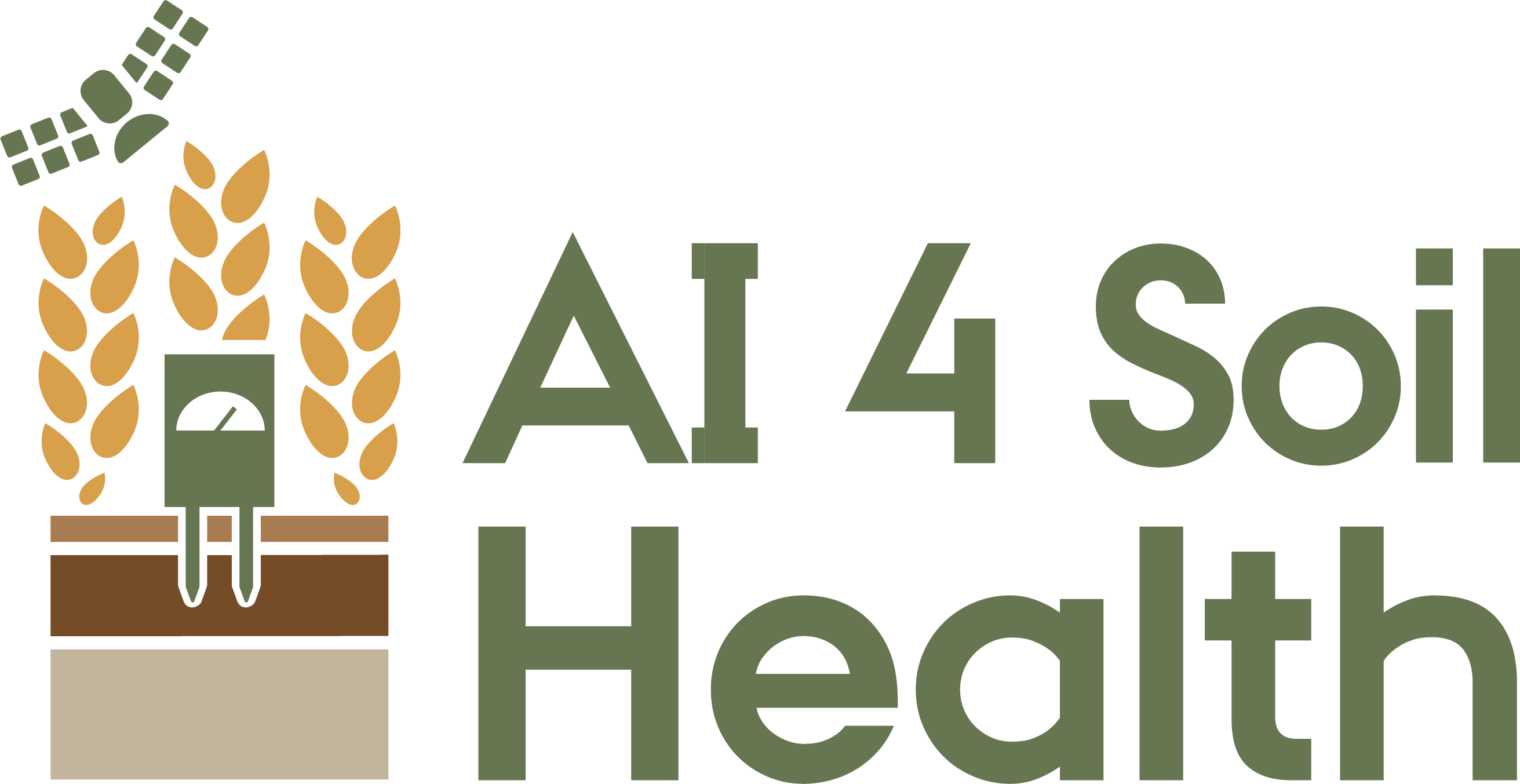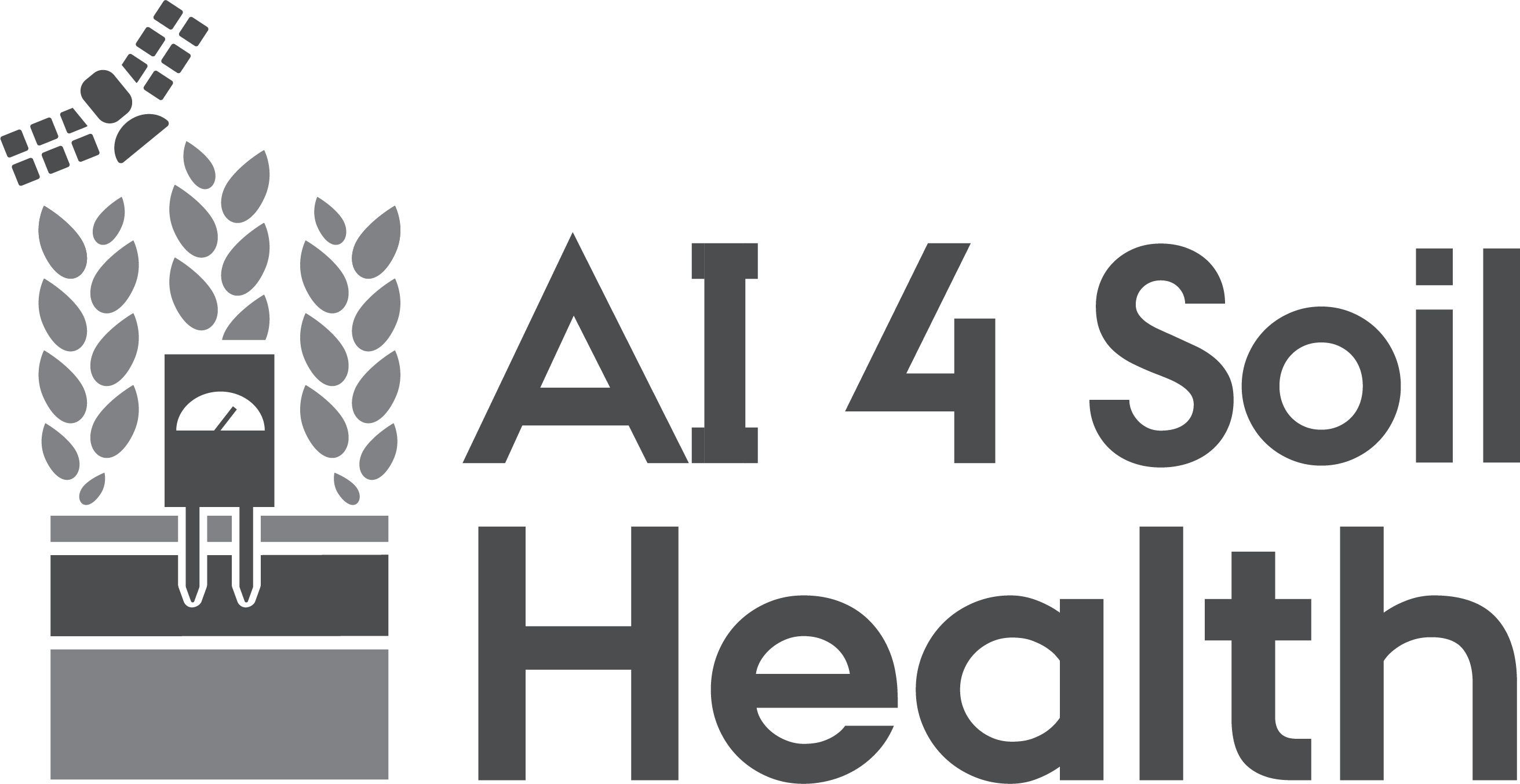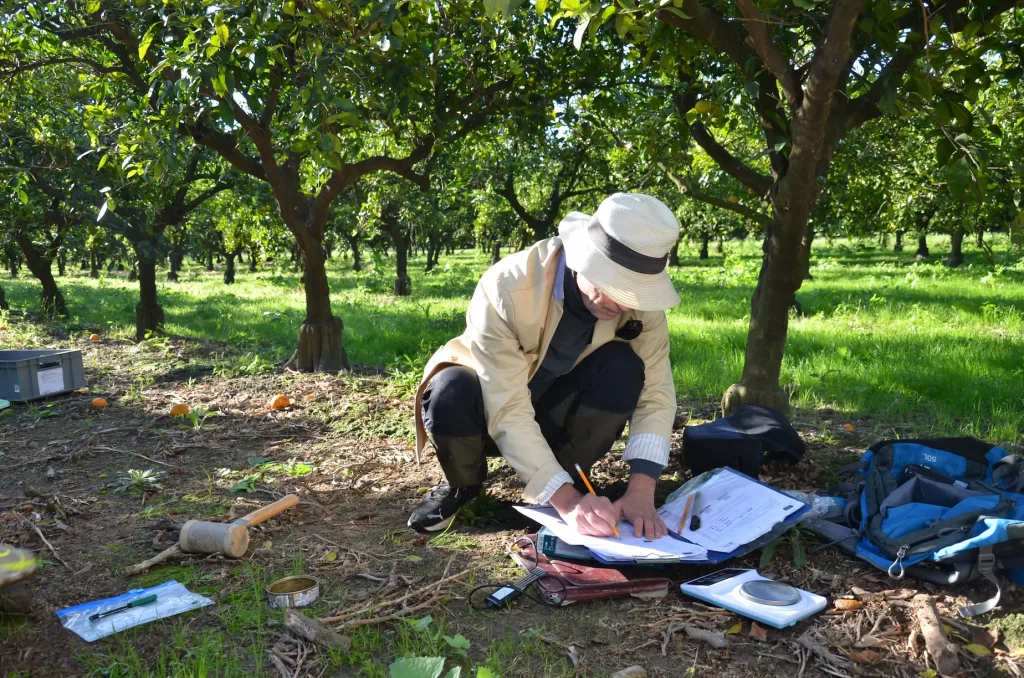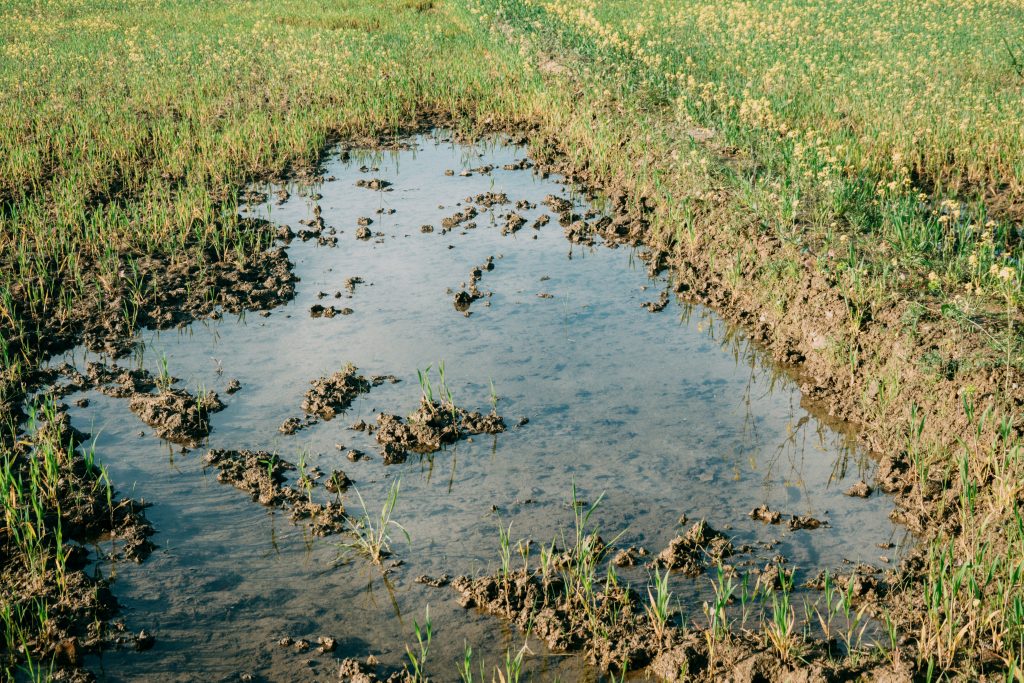While the recent “Soil Health Now” conference in Wageningen rightly emphasised the urgent need for soil health protection and the role of specific indicators in the upcoming soil health law, a critical yet often neglected factor is the timing of these measurements. The prevailing assumption seems to be that because the proposed indicators change gradually, the precise moment of assessment is less important. However, the timing of soil health measurements can dramatically influence the assessment, potentially leading to an inaccurate picture of soil health even with the chosen indicators. Could the current approach overlook crucial temporal dynamics?
In this blog, Peter Lehmann and Sonia Meller discuss how forest soils are a perfect example of why we need to approach the timing of soil sampling carefully.

(a) Swiss pilot site in Lens, a forest with Scots Pine. (b) Infiltration experiment conducted at another site in the Rhône valley: the added water (highlighted in blue) is not distributed homogeneously but is repelled from the left area (ring diameter is 8 cm).
Water repellence after droughts
In steep forests located in dry regions, where the amount of rainfall is often less than the potential for water to evaporate, the efficient use of whatever rain falls during the growing season is absolutely vital for sustaining biological processes. When surface runoff occurs and water is lost during this critical period, it can be a pivotal factor determining whether trees survive or not. Surface runoff can be triggered if the rate at which rain falls during an intense storm is greater than the soil surface’s ability to absorb that water, known as its infiltration capacity. Healthy soils develop large structural pores, which minimize runoff because these pores act as pathways for water to infiltrate and redistribute quickly. The overall ability of the soil to absorb water during sustained rainfall is eventually controlled by its saturated hydraulic conductivity, which can be quite high (several meters per day) thanks to these structural pores. These conductivity values are significantly faster than typical natural rainfall intensities and faster than the rate at which water can move through the soil matrix itself, where the pore sizes are determined by the soil’s texture only. When a rainfall event begins, the infiltration capacity of dry soil is further enhanced by capillary forces, which essentially suck water from the wet surface down into the dry topsoil. Because of these combined mechanisms – water is being absorbed by the dry soil and is quickly moving through structural pores – surface runoff is generally uncommon in healthy soils.
The impact of severe drought on soil
However, this situation changes dramatically when rainfall becomes so infrequent that the soil surface dries out completely. As a consequence of the changing concentrations of organic molecules at the soil surface, the surface chemistry itself is altered. This leads to soil particles becoming coated with organic molecules that repel water. When rain then falls, it is no longer absorbed by the surface but instead runs downhill. This runoff represents a loss of crucial water for the growing trees and can also lead to erosion and the loss of valuable topsoil.
The need for timely soil health indicators
A soil that loses its ability to be rewetted cannot effectively support plant growth and is unable to provide all the essential functions that healthy soil performs. In that respect, a water-repellent, or hydrophobic, soil is not a healthy soil. To identify when these ‘unhealthy’ periods and the associated decline in soil functions occur, we must measure appropriate indicators. These indicators need to be sensitive to changes in (1) how well water infiltrates the soil and (2) to the biological processes that are affected when water becomes limited.
(1) While soil water holding capacity is one indicator related to how well soil absorbs water through capillary forces, the standard ways of measuring it often involve using disturbed (sieved) soil samples, a procedure that removes the influence of the large structural pores. Alternatively, samples might be saturated with water for extended periods, which doesn’t accurately reflect the conditions during rainfall on sloping ground where water can run off. (2) Related to biological processes, biodiversity tends to change too slowly to effectively capture rapid reductions in soil functions and the soil respiration rate is too sensitive to short term (e.g., diurnal) environmental conditions. In short, none of these indicators can capture the temporal changes of water infiltration capacity and its effect on biological processes.
Proposed indicators: infiltration rate and enzyme activity
Instead, we need soil health indicators that meet specific criteria: (i) they should be sensitive to seasonal changes in both the physical and biological properties of the soil, (ii) they should be measurable in remote, steep areas, and (iii) they should be able to be evaluated efficiently, ideally providing near ‘real time’ information on whether the soil’s condition has changed. As potential candidates for such indicators, we propose directly measuring the surface infiltration rate and the activity of extracellular enzymes in the soil. The following case study from Switzerland illustrates the value of these measurements.
Case study: the Swiss pilot site
The Swiss pilot site is located in the valley of the river Rhône at an elevation of 1060 meters above sea level and is home to 150–170-year-old Scots pine trees growing in silt loam and loamy soil (photo a). During the summer season, there is a significant water imbalance in the forests of the Rhône valley with high evaporation and low rainfall, that led to drought stress in recent summers, resulting in defoliation and even death of the Scots pine especially in forests at lower elevation (Hunziker et al., Frontiers in Forests and Global Change, 5, 874100). In the year 2024, we conducted measurements of the soil surface infiltration rate and the activity of specific enzymes six times between March and December. In the spring, when soil moisture was higher, the infiltration rate of the soil surface (i.e. the maximum amount of rainfall that can enter in the soil) was greater than 10 meters per day. However, as the water content in the soil decreased during the summer months, this rate dropped significantly to values below 1 meter per day (Figure a). While these lower values might still seem relatively high (larger than natural rainfall amounts), it is important to note that these measurements were taken by adding water within a metal ring (photo b), which prevented the water from flowing downhill as it would naturally on a slope.
We also tracked changes in the activity of enzymes involved in the decomposition of carbon during the summer months. Specifically, we looked at N-acetylglucosaminidase (GLA) (Figure b) that is involved in the decomposition of chitin in the walls of fungi, and β-Glucosidase (GLS) (Figure c) supporting the decomposition of cellulose. The activities of both enzymes increase from spring to summer (related to microbial and plant production) reaching a maximum value but show then a slightly different behaviour during the summer period (yellow) with decreasing water content: the activity of GLA seems to follow the trend of the water content but GLS goes along with the soil temperature. Note that the following experimental conditions must be considered to interpret the enzymatic activity data: (1) samples were collected at the wet spots where infiltration was measured and in dry areas without infiltration. In nearly all cases, we saw decreased soil enzymatic activity in the re-wetted sites. This suggests that the water introduced into the system might have leached some enzymes into deeper soil layers, leading to a decreased activity at the surface layers. A similar loss of soil enzymes might occur during runoff, where soil particles (and thus enzymes) are carried downslope, reducing the soil’s potential to provide nutrients from organic matter to plants. (2) The measurements were conducted at a constant room temperature on samples collected in the field. The observed temperature effects are thus a result of the seasonal environmental conditions but not of temperature dependent kinetics. (3) During the measurement, moisture and substrate is supplied to the soil, providing optimal conditions and thus capturing all enzymes present in the sample. An observed drop of enzymatic activity in dry summers is thus not related to inactive enzymes but a reduction of the enzymatic pool.

(a) The surface infiltration rate closely follows the patterns of soil moisture.
(b) The activity of the glucosaminidase (GLA) also slightly decreased during the dry season.
(c) The glucosidase (GLS) was more affected by the soil temperature.
Note that the activity was measured at the wet spots where infiltration was measured (blue) and in dry areas without infiltration (red). The yellow area marks the dry summer period.
Soil health assessment requires precision in space and time
The findings from our pilot site demonstrate that the health of the soil can change significantly during dry summer months, transforming a healthy, well-structured soil into a water-repellent layer that leads to surface runoff and a reduction in essential soil functions. Therefore, the timing of our measurements is crucial and depends on which specific soil functions we are trying to assess with our indicators. Monitoring soil temperatures and water content (or broader climatic conditions) can help us identify periods when there is a higher risk of water repellence developing.
Another key lesson learned from this case study is the importance of where we take our measurements. Water repellence (and the subsequent rewetting in the fall) primarily occurs in the very top layer of the soil, which in our study was about 2 cm thick. This thin surface layer plays a critical role in determining whether a soil can provide essential services like water storage and support for plant growth, or whether it should be considered unhealthy.
Dr. Peter Ulrich Lehmann is a lecturer at the Department of Environmental Systems Science for ETH Zürich. Dr. Sonia Meller is co-founder of DigitSoil .



